#Best doctor for Stroke Intervention in pitampura
Text
Best doctor for brain stroke in Pitampura - What is Brain Stroke? Difference between migraine and brain stroke
vimeo
Dr. Shailesh Jain is the best doctor for brain stroke in Pitampura . He is one of the best Neurosurgeon in Pitampura without any doubt. And in a situation like brain stroke in which every single second matters for the patient it’s best to go to the top Neurosurgeon without wasting any more time because the sooner they get the treatment the better its result will be for them.
#Dr shailesh jain AIIMS Neurosurgeon#Best doctor for brain stroke in pitampura#Top Neurosurgeon in pitampura#Best doctor for back pain in pitampura#Best doctor for headache in pitampura#Best doctor for migraine in pitampura#Best doctor for fits in pitampura#Best doctor for brain hemorrhage in pitampura#Best doctor for depression in pitampura#Best doctor for Stroke Intervention in pitampura#best doctor for head and spine injury in pitampura#Best doctor for Paralysis in pitampura#Best doctor for epilepsy in pitampura
0 notes
Photo
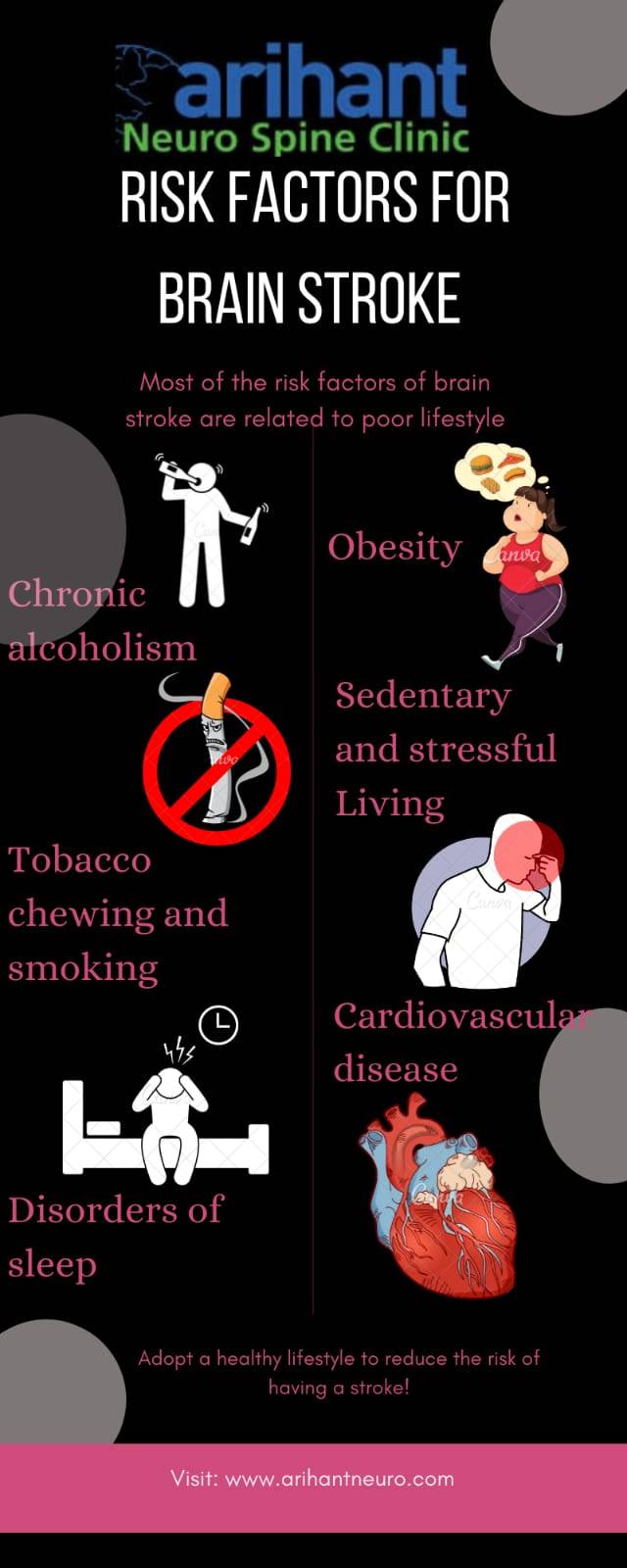
#Dr shailesh jain AIIMS Neurosurgeon#Best doctor for brain stroke in pitampura#Top Neurosurgeon in pitampura#Best doctor for back pain in pitampura#Best doctor for headache in pitampura#Best doctor for migraine in pitampura#Best doctor for fits in pitampura#Best doctor for brain hemorrhage in pitampura#Best doctor for depression in pitampura#Best doctor for Stroke Intervention in pitampura#best doctor for head and spine injury in pitampura#Best doctor for Paralysis in pitampura#Best doctor for epilepsy in pitampura
0 notes
Text
Best doctor for brain stroke in Pitampura - What is Brain Stroke? Difference between migraine and brain stroke:

The most complex organ of human body is its brain. Our brain needs constant supply of oxygen and blood to function properly. But once, there is a disruption in the supply of blood to the brain cells, it leads to lack of oxygen and glucose in the brain that causes brain death within a couple of minutes.
Brain stroke which is also known as stroke or cerebrovascular accident is a medical condition in which blood supply to a portion of the brain ceases or decreases and due to the severe interruption in the blood supply the brain cells starts dying quickly because of the lack of oxygen and vital nutrients creating a medical emergency. The inability of neurons to regenerate causes permanent damage or irreversible consequences. It (stroke) can also be said as blood vessel disorder in the brain.
A brain stroke can happen suddenly or without warning. There are 1 million people in India who have brain stroke every year. The brain stroke is the fifth leading cause of death in the USA. The two main reasons behind having a stroke are-
• Tearing or rupturing of a blood vessel, leading to bleeding in and around the brain
• The second reason is the blood clot that blocks the artery in and around the brain.
Both the conditions causes damaging to brain as they do not let oxygen and other nutrients reach to the brain cells. If the person doesn’t get timely medical attention in a brain stroke, then that person can suffer severe consequences or may die because of the stroke. It’s better to be safe than sorry. Stroke requires immediate medical attention to save the person from facing any serious consequences. In a serious condition like this it is important to only take the services and advice of the best medical practitioner before doing anything and Dr. Shailesh Jain is the best doctor for brain stroke in Pitampura . He is one of the best Neurosurgeon in Pitampura without any doubt. And in a situation like brain stroke in which every single second matters for the patient it’s best to go to the top Neurosurgeon without wasting any more time because the sooner they get the treatment the better its result will be for them.
But how do you identify whether you are having a stroke or not? Women are more at a risk of experiencing stroke as compared to men. Here are a few general symptoms of a stroke that are found in men and women both.
Symptoms of Brain stroke:
The symptoms of a stroke occur in the body parts that are controlled by the damaged areas of the brain, which is why these symptoms can vary depending on the damaged part of the brain in different people. Knowing the symptoms of the stroke will help you identify it quickly and to take necessary actions.
• Paralysis in one side of the body or face
• Weakness or numbness in the arm, leg or face, especially on one side of the body
• Slurred speech or trouble in speaking or understanding the speech
• Confusing
• Difficulty in walking
• Vision problems such as blurred or double vision in one or both of the eyes, vision blackened
• Loss of coordination or balance
• Sudden and severe headache
• Dizziness
As mentioned earlier, women have a higher lifetime risk of having a stroke as compared to men. There are few symptoms that are most commonly found in women:
• Hallucinations
• Nausea or vomiting
• Pain and weaknesses
• Shortness of breath
• Loss of consciousness
• Seizures
• Lack of responsiveness
• Disorientation or sudden changes in behaviour like increase in agitation, etc.
These symptoms are not very common in men. Since women are more at a risk of having stroke than men, their risk of dying from stroke also increases, that’s why it is important to identify brain stroke as soon as possible to get its treatment started.
Causes of Brain Stroke:
The cause of stroke depends on the type of stroke the person is having. There are mainly three types of stroke hemorrhagic stroke, ischemic stroke and transient ischemic attack(TIA). The TIA is caused by a temporary blockage in the artery (basically a blood clot) that leads to the brain. Similarly, ischemic stroke is also caused by a blood clot, or it can also be caused by atherosclerosis, in this condition a fatty substance builds up on the walls of blood vessels. But a hemorrhagic stroke is caused by a leaking blood vessel. In this condition, the blood seeps around the brain tissues that causes pressure and leads to brain damage.
Risk factors for Brain Stroke And How to prevent it:
Although the brain stroke is caused due to interrupted supply of blood to the brain, there are few risk factors that you can avoid preventing brain stroke from happening as prevention is always better than cure. Then, why not prevent it from happening in the first place rather than running to the neurologist to reduce the repercussions. These few factors make you more susceptible to stroke, especially women. Minimizing these risk factors will reduce your chances of having a stroke. Factors include:
• The first factor that increases your chances of having a stroke is an unhealthy diet, especially a diet that has salt, cholesterol, saturated fats, etc. in high quantity.
• Lack of physical activity, not doing exercise and being inactive at most parts of the day also leads to stroke
• Chronic alcoholism, high intake of alcohol is harmful for both men and women as it heads to high blood pressure and becomes one of the factors that increases your chances of having a stroke
• Eating Tobacco damages your blood vessels and heart and hence leading to stroke.
Apart from these factors there are few personal risk factors that can’t be controlled like family history, your gender, your age, your race and ethnicity, these factors tocontribute in the risk of having a brain stroke, for instance older people are more prone to strokes than younger ones. Apart from these things, your health history can also become the reason for having stroke as some medical conditions are linked to stroke. But to know clearly about your risk factors, consult your doctor. Dr. Shailesh Jain is the best doctor for stroke intervention in Pitampura, he has more than 15 years of experience in treating patients, consult him for any neurological disorder.
How to prevent stroke? As by now, you must have understood that the most of the risk factors arise due to poor lifestyle, so the simplest and easiest way to prevent a stroke is by adopting a healthy lifestyle. Here are a few steps that you can take to live a healthy lifestyle:
• Quit smoking as soon as you can. I know it’s easier said than done, but start from today itself, and soon you will surely be able to overcome your habit of smoking.
• Start excising daily. According to a research, an average adult should do 2.5 hours of cardio workout every week. Excising has ‘n' number of health benefits. Even walking for an hour every day will help.
• Eat healthy foods like seasonal fruits and vegetables, green leafy vegetables, and avoid junk and food that is high in cholesterol.
• Keep your weight in control. Obesity also causes stroke. Avoid oily food.
• If you drink alcohol, try to consume it in moderation, don’t drink alcohol in excessive amount.
By following these steps, you can reduce your chances of having a stroke. And live a healthy life but don’t forget to go for regular health check-ups and stay in touch with your doctor because these steps only minimize the risk they, don’t eliminate the disease.
How to distinguish it from Migraine?
A sudden severe headache is a sign of stroke, but people also face severe headaches in migraine, it becomes difficult to identify whether the headache is caused by stroke or migraine. Even though there are few symptoms that are same in both the condition, one thing that differentiates the two is the onset of symptoms for instance, in stroke the symptoms usually occur suddenly but in migraine they occur gradually. In migraine the headache is small in the beginning and gets more painful later on, but in Stoke the headache is severe from the start itself. Both migraine and stroke are very common neurological conditions,but they differ from each other in few aspects.
A stroke is a serious medical emergency, but a migraine is a chronic medical condition, that can occur several times in a month. A stroke can be fatal, but an episode of migraine does not causes death or long-term effects on health. A stroke is cardiovascular disease, but a migraine is not.
These factors definitely tell the difference between the two, but it’s best to visit your neurosurgeon and get it diagnosed rather than jumping unto any conclusion on your own. Dr. Shailesh Jain is the best doctor for migraine and best doctor for headache in Pitampura, so if you’re facing any neurological disorders visit his clinic and get your treatment started promptly, as he is the best neurosurgeon you can find in Delhi.
#Dr shailesh jain AIIMS Neurosurgeon#Best doctor for brain stroke in pitampura#Top Neurosurgeon in pitampura#Best doctor for back pain in pitampura#Best doctor for headache in pitampura#Best doctor for migraine in pitampura#Best doctor for fits in pitampura#Best doctor for brain hemorrhage in pitampura#Best doctor for depression in pitampura#Best doctor for Stroke Intervention in pitampura#best doctor for head and spine injury in pitampura#Best doctor for Paralysis in pitampura#Best doctor for epilepsy in pitampura
0 notes
Photo

Dr. Shailesh Jain is the Best neurologist in pitampura and Shalimarbagh has been performing with excellent results for the last 16 years. He has vast experience in this field. Dr. Shailesh Jain runs his Arihant Neurospin Clinic in Pitampura and Max Superspeciality Hospital, Shalimar Bagh. Dr Shailesh Jain is Principal Consultant Neurosurgery and Neurointervention at Max Hospital Shalimar Bagh and runs his own Arihant Neurospine clinic in Pitampura and Shalimar Bagh.
visit : http://www.arihantneuro.com/
#Best doctor for epilepsy in pitampura#Best doctor for Paralysis in pitampura#best doctor for head and spine injury in pitampura#Best doctor for Stroke Intervention in pitampura#Best doctor for depression in pitampura#Best doctor for brain hemorrhage in pitampura#Best doctor for fits in pitampura#Best doctor for migraine in pitampura#Best doctor for headache in pitampura#Best doctor for back pain in pitampura#Best neurologist in pitampura#Best doctor for brain stroke in pitampura#Dr shailesh jain AIIMS Neurosurgeon
0 notes
Text
Best Neurologist in Pitampura - What is Neurofibromatosis Type 1
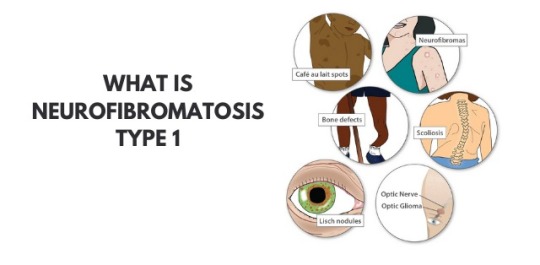
Dr Shailesh Jain - Neurofibromatosis type 1 is characterized by changes in skin color and also the development of tumors along the veins within the skin, brain, and other parts of the body. The signs and symptoms of this condition are widely different among affected people.
Neurofibromatosis type 1 also called as Recklinghausen disease or von Recklinghausen disease or von Recklinghausen’s phakomatosis or von Recklinghausen’s neurofibromatosis or neurofibroma (multiple) or peripheral neurofibromatosis.
At birth or early childhood, affected individuals may have relatively large, benign tumors that consist of bundles of nerves and other tissue (plexiform neurofibromas). Individuals with Neurofibromatosis type 1 may also develop benign nodules on the colored regions of the eyes (Lisch nodules), or tumors in the nerves of the visual pathway (optic pathway gliomas) by Best doctor for brain stroke in Shalimar Bagh.
According to Dr Shailesh Jain, Neurofibromatosis type 1 could also be characterized by unusually large head size (macrocephaly) and comparatively small height. Additional abnormalities may be present, like episodes of uncontrolled electrical activity within the brain (seizures), Learning disabilities, and lack of attention; Speech difficulties; Abnormally increased activity (hyperactivity), And skeletal malfunctions, including progressive curvature of the spine (scoliosis), bending of the lower legs (pseudoarthrosis) and improper development of some bones.
Symptoms of Neurofibromatosis type 1
Flat, brown spots (cafe au lait) on the skin -These harmless spots are common in many folks. Having more than six cafe au lait spots suggests Neurofibromatosis type 1. they're usually present at birth or appear during the primary years of life. After childhood, new spots stop appearing.
Freckling in the armpits or groin area - Freckling usually appears by ages 3 to 5 Freckles are smaller than cafe-au-lait spots and tend to occur in clusters in skin folds.
Tiny bumps on the eye's iris (lynch nodules) - These harmless nodules aren’t easily seen and don't affect vision.
Bone deformity - Abnormal bone development and reduction in bone mineral density can lead to bone deformities such as curved spine (scoliosis) or tilted lower leg.
Tumor on the optic nerve (optic glioma) - These tumors usually appear at the age of 3, rarely in childhood and adolescence, and almost never in adults.
Larger than average head size - Children with Neurofibromatosis type 1 are larger than the average head size due to increased brain volume.
short stature - Children who have Neurofibromatosis type 1 often have lower-than-average height.
Causes of Neurofibromatosis type 1
The Neurofibromatosis type 1(NF1) gene on chromosome 17 produces a protein called neurofibromin that regulates the growth of your cells. Mutation of this gene causes neurofibromin loss and uncontrolled cell growth.
NF1 complications
Neurological problems - Thinking and learning difficulties are the most common neurological problems associated with NF1. Unusual complications include epilepsy and the creation of excess fluid in the brain.
Vision problems - Sometimes a tumor develops on the optic nerve, which can affect vision.
Heart problems - People who have NF1 have an increased risk of hypertension and blood vessel abnormalities may develop.
Trouble breathing - Rarely, plexiform neurofibromas can exert pressure on the airway.
About Dr. Shailesh Jain, Neurosurgeon, Neurologist
Dr. Shailesh Jain is the Best neurologist in pitampura and Shalimarbagh has been performing with excellent results for the last 16 years. He has vast experience in this field. Dr. Shailesh Jain runs his Arihant Neurospin Clinic in Pitampura and Max Superspeciality Hospital, Shalimar Bagh. Dr Shailesh Jain is Principal Consultant Neurosurgery and Neurointervention at Max Hospital Shalimar Bagh and runs his own Arihant Neurospine clinic in Pitampura and Shalimar Bagh.
#Dr shailesh jain AIIMS Neurosurgeon#Best doctor for brain stroke in pitampura#Best neurologist in pitampura#Top Neurosurgeon in pitampura#Best doctor for back pain in pitampura#Best doctor for headache in pitampura#Best doctor for migraine in pitampura#Best doctor for fits in pitampura#Best doctor for brain hemorrhage in pitampura#Best doctor for depression in pitampura#Best doctor for Stroke Intervention in pitampura#best doctor for head and spine injury in pitampura#Best doctor for epilepsy in pitampura
0 notes
Photo
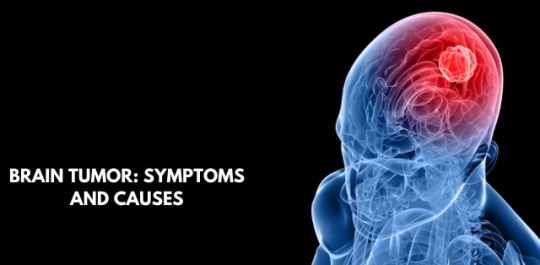
Dr. Shailesh Jain is the Best Neurosurgeon in Shalimar Bagh and Neurologist in pitampura who has been performing with excellent results for the last 16 years. He has vast experience in this field. Dr. Shailesh Jain runs his Arihant Neurospin Clinic in Pitampura and Max Superspeciality Hospital, Shalimar Bagh. Dr Shailesh Jain is Principal Consultant Neurosurgery and Neurointervention at Max Hospital Shalimar Bagh and runs his own Arihant Neurospine clinic in Pitampura and Shalimar Bagh.
#Dr shailesh jain AIIMS Neurosurgeon#Best doctor for brain stroke in pitampura#Best neurologist in pitampura#Top Neurosurgeon in pitampura#Best doctor for back pain in pitampura#Best doctor for headache in pitampura#Best doctor for migraine in pitampura#Best doctor for fits in pitampura#Best doctor for brain hemorrhage in pitampura#Best doctor for depression in pitampura#Best doctor for Stroke Intervention in pitampura#best doctor for head and spine injury in pitampura#Best doctor for Paralysis in pitampura#Best doctor for epilepsy in pitampura#Best doctor for brain stroke in Rohini#Best neurologist in rohini#Best doctor for back pain in rohini#Best doctor for headache in rohini
0 notes
Photo
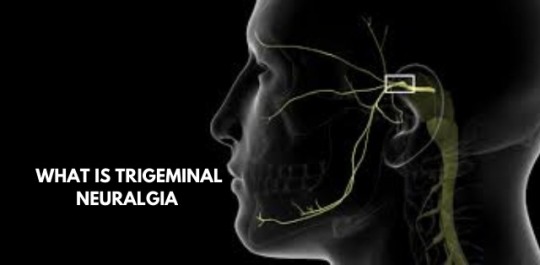
Dr. Shailesh Jain is the best physician for Trigeminal Neuralgia who has been performing with excellent results for the last 16 years. He has vast experience. Dr. Shailesh Jain runs his Arihant Neurospin Clinic in Pitampura and Rohini. Dr Shailesh Jain is Principal Consultant Neurosurgery and Neurointervention at Max Hospital Shalimar Bagh and runs his own Arihant Neurospine clinic in Pitampura and Rohini.
#Best doctor for epilepsy in pitampura#Best doctor for Paralysis in pitampura#best doctor for head and spine injury in pitampura#Best doctor for Stroke Intervention in pitampura#Best doctor for depression in pitampura#Best doctor for brain hemorrhage in pitampura#Best doctor for fits in pitampura#Best doctor for headache in pitampura#Best doctor for back pain in pitampura#Top Neurosurgeon in pitampura#Best doctor for brain stroke in pitampura#Best neurologist in pitampura#Dr shailesh jain AIIMS Neurosurgeon
0 notes
Text
Best Neurologist in Pitampura - What is Trigeminal neuralgia

Trigeminal neuralgia is a chronic pain condition that influences the trigeminal nerve, which carries sensation from your face to your brain.Trigeminal neuralgia is also known as tic douloureux.
In most people, trigeminal neuralgia improves with treatment or goes on to release on its own.Trigeminal neuralgia affects women more frequently than men and is more likely to occur in people who are more than aged 50. It is sometimes described as the most excruciating pain known to humanity. According to Dr. Shailesh Jain, the pain usually involves the lower face and jaw, although sometimes it influences the area around the nose and above the eye. The pain usually lasts from a few seconds to a few minutes.It can be so intense that you win involuntarily, hence the word tick (tick borne disease). There is usually no pain or numbness between the attacks and there is no relaxation of the facial muscles.
Symptoms of Trigeminal neuralgies
Episodes of sharp, stinging pain in the cheeks or jaws that can feel like an electric shock
Episodes of pain can occur from touching the face or teeth, including shaving, applying makeup, brushing teeth, eating, drinking, or talking - or even light air.
Relief period between episodes
Anxiety at the thought of returning pain
A constant pain, a burning sensation may occur before the trigeminal neuralgia develops in spasms.
Pain affects one side of the face at a time, although rarely it can affect both sides of the face
The pain is concentrated in one place or spread in a broader pattern
Causes of Trigeminal neuralgia
In this case, the problem is contact between a normal blood vessel, an artery or vein, and the trigeminal nerve at the base of your brain. This contact puts pressure on the nerve and causes malfunction.Trigeminal neuralgia can occur as a result of aging, or it may be related to multiple sclerosis and a similar disorder that damages the myelin sheath that protects some nerves. Trigeminal neuralgia can also be caused by tumors that compress the trigeminal nerve.Some people may experience trigeminal neuralgia due to a brain lesion or other abnormalities. In other cases, surgical injuries, stroke or facial trauma may be responsible for trigeminal neuralgia.
Treatment for Trigeminal neuralgia explained by Dr. Shailesh Jain
The treatment contains anticonvulsant and nerve pain medications, injections, and surgery Medication:
To treat trigeminal neuralgia, your doctor will usually prescribe medications to reduce or block the pain signals sent to your brain.
Anticonvulsant:
Prevents or controls seizures, relieves pain, and treats symptoms of some mental disorders
Injection:
Glycerol Injection is During this process, your doctor places a needle via your face and into the base of your skull.
Surgery:
Microvascular disruption:This process involves moving or removing blood vessels that are in contact with the trigeminal root to protect the nerve from malfunction. During microvascular disruption, your doctor makes an incision behind the ear to favor your pain.Then, through a small hole in your skull, your surgeon passes via any arteries that are in contact with the trigeminal nerve away from the nerve and places a soft pillow between the nerve and the arteries.
Brain stereotactic radiosurgery: In this process, a surgeon directs a concentrated dose of radiation to the root of your trigeminal nerve. This process uses radiation to damage the trigeminal nerve and reduce or eliminate pain. Relief occurs gently and can take up to a month.
About Dr. Shailesh Jain AIIMS Neurosurgeon
Dr. Shailesh Jain is the best physician for Trigeminal Neuralgia who has been performing with excellent results for the last 16 years. He has vast experience. Dr. Shailesh Jain runs his Arihant Neurospin Clinic in Pitampura and Rohini. Dr Shailesh Jain is Principal Consultant Neurosurgery and Neurointervention at Max Hospital Shalimar Bagh and runs his own Arihant Neurospine clinic in Pitampura and Rohini.
You can Book an appointment for any type of Spine Treatment as well as Brain Treatment.
#Bestneurologistinpitampura#Dr shailesh jain AIIMS Neurosurgeon#Best doctor for brain stroke in pitampura#best neurologist in pitampura#Top Neurosurgeon in pitampura#Best doctor for back pain in pitampura#Best doctor for headache in pitampura#Best doctor for migraine in pitampura#Best doctor for fits in pitampura#Best doctor for brain hemorrhage in pitampura#Best doctor for depression in pitampura#Best doctor for Stroke Intervention in pitampura#best doctor for head and spine injury in pitampura#Best doctor for Paralysis in pitampura#Best doctor for epilepsy in pitampura
0 notes
Photo
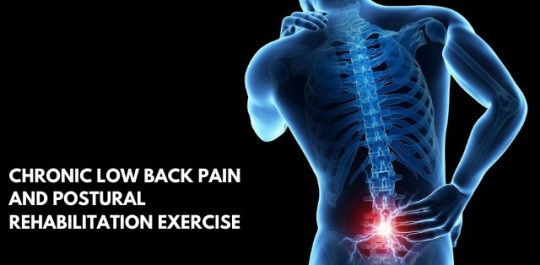
Dr Shailesh Jain is the Best doctor for Back Pain in Pitampura, a renowned Neurosurgeon and Stroke Interventionist has been performing Minimal Invasive Neuro & Spine Surgeries for the past 16 years with excellent results. He has vast experience and has been a pioneer in the treatment of Brain & Spine diseases such as fits, headaches, cervical and lower back pain, brain and spine Tumor. Dr Shailesh Jain is Principal Consultant Neurosurgery and Neurointervention at Max Hospital Shalimar Bagh and runs his own Arihant Neurospine clinic in Pitampura and Rohini.
#Dr shailesh jain AIIMS Neurosurgeon#Best doctor for brain stroke in pitampura#Best neurologist in pitampura#Top Neurosurgeon in pitampura#Best doctor for back pain in pitampura#Best doctor for headache in pitampura#Best doctor for migraine in pitampura#Best doctor for fits in pitampura#Best doctor for brain hemorrhage in pitampura#Best doctor for depression in pitampura#Best doctor for Stroke Intervention in pitampura#best doctor for head and spine injury in pitampura#Best doctor for Paralysis in pitampura#Best doctor for epilepsy in pitampura
0 notes
Photo

Dr. Shailesh Jain is the Best neurologist in shalimar bagh. He is a principal consultant neurosurgeon and stroke interventionist at Max Hospital Shalimar Bagh and runs his own Arihant Neurospine clinic in Rohini and Pitampura.
You can Book an appointment for any kind of spinal cord Treatment as well as Brain Treatment.
#Best doctor for epilepsy in pitampura#Best doctor for Paralysis in pitampura#best doctor for head and spine injury in pitampura#Best doctor for Stroke Intervention in pitampura#Best doctor for depression in pitampura#Best doctor for brain hemorrhage in pitampura#Best doctor for fits in pitampura#Best doctor for migraine in pitampura#Best doctor for headache in pitampura#Best doctor for back pain in pitampura#Top Neurosurgeon in pitampura#Best neurologist in pitampura#Best doctor for brain stroke in pitampura#Dr shailesh jain AIIMS Neurosurgeon
0 notes
Text
Best neurologist in shalimar bagh - Why migraine is harmful to health

Migraines have a lifespan in about 15% of the population, affecting women (18%) compared to men (8%). Migraines are acute, recurring headaches that can last for hours or days. They often affect one side of the head, causing moderate to severe palpitations, tremors, or severe pain. Migraine, a fairly disabling condition, is treated with acute and preventive medications.
Dr. Shailesh Jain handled many cases of migraines in his 15+ years of career. He said, the pain of a single migraine headache usually only lasts for a few hours or days. But this will affect your health in many ways.
According to Dr. Shailesh Jain AIIMS Neurosurgeon, migraine is a chronic condition characterized by episodic attacks of disabling headaches. Migraine pain usually lacks other characteristics such as nausea, dizziness, excessive sensitivity to light, noise, and smell. Hunger, disturbances of bowel function, etc. Numerous Migraine patients with chronic migraines will have additional problems that increase their tendency to headache: These covers depression, anxiety, other pain syndromes such as fibromyalgia, localized pain in the head and neck structures and conditions that cause 'metabolic' stress such as sleep apnoea or postural orthostatic tachycardia syndrome. Only about 20% of migraine sufferers experience a headache, usually before the onset of the headache (but usually not). Most aura is visual, consisting of a combination of positive visual events (floaters, flashes of light, zig-zag patterns, and so on) and negative phenomena (loss of vision blind spots). Many sufferers also experience sensory aura, often with tingling and numbness spread on one side of the body on the hands, face, lips, and tongue. Weakness, dyspepsia and other aura symptoms are rare.
There are two typical patterns of headache such as Thunderclap headache and persistent worsening headache. Thunderclap headache causes Subarachnoid haemorrhage, Cerebral venous sinus thrombosis (CVST), Reversible cerebral vasoconstriction syndrome, Carotid/vertebral artery dissection, Pituitary apoplexy, Intracerebral haemorrhage/haematoma, Hypertensive encephalopathy, Hypertensive encephalopathy, and Idiopathic thunderclap haemorrhage (Call–Fleming syndrome). Persistent worsening headache causes Raised cerebrospinal fluid (CSF) pressure (tumour, abscess, CVST, idiopathic intracranial hypertension), Low CSF volume (post-lumbar puncture, spontaneous CSF leak), Meningitis (acute/chronic), Hypoxia/hypercapnia, Substance abuse/withdrawal, Systemic inflammatory conditions, including temporal arteritis.
How to relieve Migraine pain
Migraine is the usual source of recurrent, severe headache. When patients have chronic severe headaches, it is often difficult to acknowledge specific triggers. There are some drugs of first choice for migraines of mild or moderate severity. Aspirin, paracetamol, ibuprofen, naproxen, diclofenac, phenazone and tolfenamic acid can help to ease your pain. Also there are other treatments as well, such as, Paradoxically it’s often the case that as chronic headaches start to boost with treatment, triggers become more obvious. Dietary regularity in relation to food, hydration, sleep, and stress is always helpful in reducing the tendency to migraine; Recognizing that this is helpful is straightforward, but it can actually be more difficult to make the expected changes in modern busy lives. Migraine prophylaxis points to turn down migraine frequency, severity and disability and improve quality of life. Chronic migraine patients require prophylactic therapy to lessen the frequency of migraine attacks, but presently available evidence-based prophylactic treatment options for chronic migraine are topiramate and onabotulinumtoxinA.
Some patients with low-frequency EM can be managed with effective acute therapy(i.e. drugs taken during the prodrome or the migraine attack to abort it) without prophylactic treatment, but patients with Chronic Migraine invariably require prophylactic treatment. While acute therapy aims to prevent a migraine attack, once initiated, the goal of prophylactic treatment is to stop the attacks, reducing the frequency, severity, and associated disability of the headache and reliance on acute treatment, Which may contribute to concurrent MOH(Medication-overuse headache).
About Dr. shailesh jain
Dr. Shailesh Jain is the Best neurologist in shalimar bagh. He is a principal consultant neurosurgeon and stroke interventionist at Max Hospital Shalimar Bagh and runs his own Arihant Neurospine clinic in Rohini and Pitampura.
You can Book an appointment for any kind of spinal cord Treatment as well as Brain Treatment.
#Dr shailesh jain AIIMS Neurosurgeon#Best doctor for brain stroke in pitampura#Best neurologist in pitampura#Top Neurosurgeon in pitampura#Best doctor for back pain in pitampura#Best doctor for headache in pitampura#Best doctor for migraine in pitampura#Best doctor for fits in pitampura#Best doctor for brain hemorrhage in pitampura#Best doctor for depression in pitampura#Best doctor for Stroke Intervention in pitampura#best doctor for head and spine injury in pitampura#Best doctor for Paralysis in pitampura#Best doctor for epilepsy in pitampura
0 notes
Text
BEST DOCTOR FOR PARALYSIS IN PITAMPURA – ALL ABOUT QUADRIPLEGIA
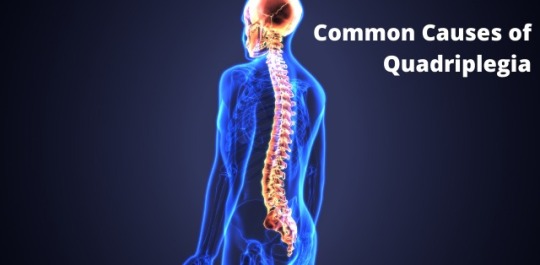
Quadriplegia, also known as Tetraplegia. In Quadriplegia, a person has partially or completely lost his/her all four limbs( Both legs and arms) and torso. It’s a kind of paralysis situation, where you lose your sensation and control of your limbs. Quadriplegia is similar to Quadriparesis, but it’s slightly different because in Quadriparesis, a person partially loses his/her control of your limbs but in Quadriplegia, it’s partially or completely lost the ability to move their limbs.
Causes of Quadriplegia by Dr. Shailesh Jain
Quadriplegia most often caused by spinal cord injury, Brain damage(which causes many other unpredictable effects, such as changes in a person’s mood or ability to think.) tumours, cervical spine injury. Most of the spinal cord injuries happen by accidents, such as traffic accidents,Auto accidents, Motorcycle accidents, falls, Gunshots accidents, Surgical complications, pedestrian accidents,Being hit by flying objects, Diving and sports injuries. This injury means lesion, called damage or abnormal change in the tissue of an organism.
There are five different types of spinal cord Injuries,
Complete spinal cord injury A: Most severe/serious type of spinal cord injury. Such a patient has no sensation or motor function below the injury.
Incomplete spinal cord injury B: Such a patient has some sensation but the motor function is limited below the injury.
Incomplete spinal cord injury C: Such a patient has some sensation and muscle control, but the muscles are weak and non-functional.
Incomplete spinal cord injury D: Such a patient has muscles that are 75% functional.
Incomplete spinal cord injury E: Minor type of spinal cord injury. Such a patient has almost normal sensation and strength.
Also Can be caused by diseases such as,
Multiple sclerosis: It is a potentially disabling disease of the brain and spinal cord, where the immune system attacks the protective sheath (myelin) that covers nerve fibers and causes communication problems between your brain and the rest of your body.
Amyotrophic lateral sclerosis (ALS), also known as Lou Gehrig disease: It is a progressive nervous system disease that affects nerve cells in the brain and spinal cord, causing loss of muscle control.
Transverse myelitis: Transverse myelitis is an irritation of the two sides of one segment of the spinal cord. This neurological problem regularly harms the insulating material covering nerve cell fibers (myelin). Transverse myelitis interferes with the messages that the spinal cord nerves send throughout the body. This can cause pain, muscle weakness, paralysis, sensory issues, or bladder and bowel dysfunction.
Guillain–Barré syndrome: Guillain-Barre condition is an uncommon issue wherein your body’s immune system attacks your nerves. Weakness and tingling in your limits are typically the first side effects. These sensations can immediately spread, and eventually paralyze your entire body.
Symptoms of Quadriplegia:
The basic symptoms of Quadriplegia:
Numbness/loss of feeling in the body, particularly in the limbs(arms and legs) or burning neuropathic pain;
Paralysis of the limbs (arms and leg)
Urinary retention and bowel dysfunction caused by lack of muscle control (which means paralysis does not allow for coordinated action for ureters, bladder, and associated muscles.)
Breathing Difficulty
Digestion Difficulty
Medical Tests for Quadriplegia:
According to Dr Shailesh Jain AIIMS Neurosurgeon, The doctor will carry out a physical examination and Assess the patient’s symptoms. They will investigate the patient’s clinical history and do certain tests to check sensory functions and movements of the body.
Apart from that, Other Tests may Include (Based on the patient’s conditions):
X-Rays
CT Scan
MRI Scan
Spinal Taps
Blood Tests
EMG Tests
Treatment of Quadriplegia:
There is no specific treatment, you are required to consult any neurosurgeon because it will depend on the extent of the injury and the patient’s condition. Quadriplegia patients do not have control over their body or senses, quadriplegia patients are always dependent on associates for getting around, going to the washroom, eating, and each other everyday movement.
Some treatment may include for Quadriplegia Patient’s:
Respiratory care
Skin management and skincare
Exercises to improve movement and strength
Occupational therapy
Bowel and bladder control programmes
How can it be Prevented:
Wearing a seat belt can decrease the danger of a genuine physical issue in a car crash or traffic accidents. Always wear helmets while travelling (Motorcycle or Bicycle), Always follow appropriate safety measures when at work or exercising.
Prognosis:
Prognosis can not be immediately given because all spinal injuries are complex, without consultation it will be dangerous to your health. It will depend on patients’ severity such as disability, mobility and sensitivity. Much of the time, the recovery is quicker in the initial a half year, and little upgrades may happen a year or two later.
About the Dr. Shailesh Jain
Dr Shailesh Jain AIIMS Neurosurgeon is the Best doctor for Paralysis in Pitampura, He deals with patients across all ages and specializes in Brain Treatment and Spinal Treatment etc. He is a principal consultant neurosurgeon and treats patients in the Max Super Speciality Hospital, Shalimar Bagh Branch and also practices in his own neurology center at Arihant Neurospine Clinic.
You can Book an appointment for any kind of spinal injury as well as Brain Injury.
Read More blogs:
Best Doctor for stroke intervention in Pitampura – Role of Neurointervention in acute brain stroke management
Best Doctor for a Brain Hemorrhage in Pitampura – Brain Hemorrhage Causes and Treatment
Top Neurosurgeon in Pitampura – Seek a neurologist if you have these symptoms
#Dr shailesh jain AIIMS Neurosurgeon Best doctor for brain stroke in pitampura Best neurologist in pitampura Top Neurosurgeon in pitampura Be#best doctor for brain hemorrhage in pitampura#Best doctor for depression in pitampura#Best doctor for Stroke Intervention in pitampura#best doctor for head and spine injury in pitampura#Best doctor for Paralysis in pitampura#Best doctor for epilepsy in pitampura
0 notes
Photo
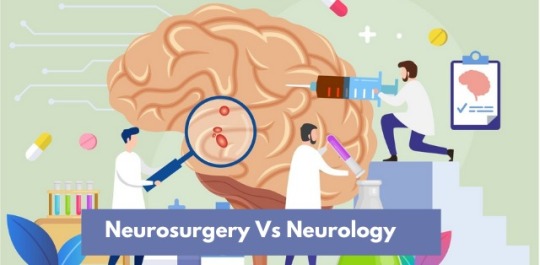
In Medical, every speciality has two branches, the first one is the medicine branch and the other one is surgical. Neurosurgeons and Neurologists are doctors who specialize in the treatment of medical problems that affect the central nervous system of the human body. The central nervous system is consist of the spinal cord and brain, it controls most functions of the body.
#Best doctor for epilepsy in pitampura#Best doctor for Paralysis in pitampura#best doctor for head and spine injury in pitampura#Best doctor for Stroke Intervention in pitampura#Best doctor for depression in pitampura#Best doctor for brain hemorrhage in pitampura#Best doctor for fits in pitampura#Best doctor for migraine in pitampura#Best doctor for headache in pitampura#Best doctor for back pain in pitampura#Top Neurosurgeon in pitampura#Best doctor for brain stroke in pitampura#Dr shailesh jain AIIMS Neurosurgeon
0 notes
Text
Dr shailesh jain AIIMS Neurosurgeon -NEUROSURGERY VS NEUROLOGY
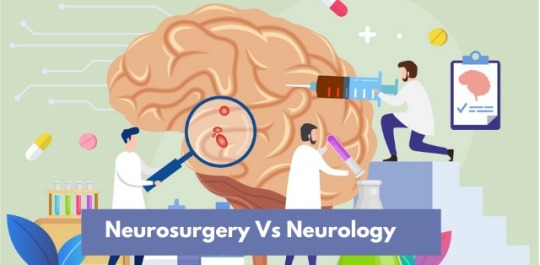
With so many medical specialities, it’s so obvious for people to get confused about whom to consult for their medical problems, especially when it is your neurological problems. It becomes tough to distinguish doctors according to their field of specialization. Something that makes this thing even more difficult is terminologies that sound similar in nature.
But don’t worry; this article is here to help you decide which Specialist you should consult according to your neurological disorder. As Neurosurgery and neurology are often misunderstood as one and the same thing, people get confused with the two.
In Medical, every speciality has two branches, the first one is the medicine branch and the other one is surgical. Neurosurgeons and Neurologists are doctors who specialize in the treatment of medical problems that affect the central nervous system of the human body. The central nervous system is consist of the spinal cord and brain, it controls most functions of the body.
What is a Neurological Disorder?
Neurological disorders can be short-term or even chronic diseases. It affects the spine, brain, central and peripheral nervous system. There are almost more than 600 neurological disorders that are found in humans. A few of the neurological disorders that are found most commonly in people are brain tumour or haemorrhage, multiple sclerosis, Parkinson’s disease, epilepsy, and amyotrophic lateral sclerosis (ALS). It also consists of memory disorders such as Alzheimer’s disease and brain malformations are also considered neurological disorders.
The diagnosis and treatment of neurological disorders come with various approaches, from medication to surgery. The treatment of neurological disorders includes medication, therapy, and even surgery depending on the condition of the patient. The first step of the treatment begins by visiting your family doctor if you are not able to identify the symptoms by yourself. Then your family doctor may refer you to a neurologist and/ or a neurosurgeon for further diagnosis and treatment.
If the treatment of the disease doesn’t involve much complication then, the neurologist will be enough to handle your treatment, but if the circumstances are not so good then, a neurosurgeon would be required for your treatment. But before starting the treatment, the diagnosis of the patient’s symptoms is made through several diagnostic tools and by conducting various tests such as laboratory tests of blood, urine, and other bodily fluids, imaging procedures like CT scan, MRI, ultrasound and Angiography are also used, to know the cause behind person’s symptoms.
What is a Neurosurgeon?
There is a common myth among people that a neurosurgeon is just a brain surgeon, but no, a Neurosurgeon is a medical practitioner who diagnoses and treats conditions of the spinal cord, brain, and nervous system through non-surgical and surgical treatment on the basis of illness and injury caused to the patient. Neurosurgeons go through extensive training in the diagnosis of neurological disorders and that is the reason why other medical practitioners or physicians such as neurologists, internists, emergency room doctors, and general practitioners request for their consultation.
Neurosurgeons are trained to treat people who have trauma to the brain and spine, blocked arteries, chronic low-back pain, aneurysms, birth defects, tumours in the brain or spine cord or peripheral nervous problems. They also perform surgeries for carpal tunnel syndrome, spinal surgery, surgery for removing tumours from the brain and spinal cord, etc. Apart from conducting complex surgeries, they also treat conditions that do not require any surgery like low back pain, neck pain, degenerative diseases of the spine, cerebrovascular diseases, strokes, Parkinson’s disease, etc.
Few surgeries performed by neurosurgeons are:
Aneurysms are weak areas in blood vessels. These areas may burst or bleed out.
The abnormal growth of brain cells leading to brain tumours. Brain tumours are categorised into two parts, the ones that are deadly are called malignant and the others that are not deadly known as benign. It is one of the most common surgeries performed by a neurosurgeon.
Discectomy- It involves the removal of the damaged intervertebral disc.
Lumbar Puncture- In this surgery, spinal fluid is extracted to diagnose and test the neurological disorder.
If you know that the patient needs any kind of complex surgeries related to his central nervous system like brain or spinal cord, then without any doubt you should consult Neurosurgeon near you to get the treatment done. Dr. Shailesh Jain has expertise in conducting various successful surgeries with the latest equipment. He is the Best Neurosurgeon you will come across, with his years of experience he instantly recognizes what treatment his patients need. Even though Neurosurgeons can perform very complex operations, they try to use non-surgical treatment methods first to treat the patient. And they shift to surgery only when these methods don’t yield any useful outcomes.
What is a Neurologist?
After knowing who is a neurosurgeon, you must also understand what is a neurologist? And what conditions do he/she treats?
A neurologist also treats diseases and conditions of the brain and central nervous system but, they do not perform surgery. This is one of the major differences between a Neurosurgeon and a neurologist. Some common neurological conditions that are treated by neurologists are headache, multiple sclerosis, Alzheimer’s disease, pain, brain tumours, sleep disorders, peripheral nerve disorders, etc. Some neurologists also has a sub-speciality like paediatric neurology, epilepsy, behaviour neurology, neurophysiology, and others.
Disorders treated by neurologists:
Alzheimer’s disease: is a progressive disease that destroys the mental functions and memory of the patient.
Epilepsy: It is an abnormal electrical activity in the brain which causes a disturbance in the patient’s cognitive ability. It also causes seizures and uncontrolled movements.
Multiple sclerosis- It is an auto-immune where T-cells of the body mistakenly eats away the protective myelin coating of the spinal cord and brain.
Parkinson’s Disease– It is a disorder of the nervous system that keeps on growing and affects movements of the body. Low dopamine levels is the reason behind symptoms of Parkinson’s disease, but the cause behind a low level of dopamine in the first place is not known yet.
Sleep Disorders- Change in the normal sleeping patterns of the person, which causes him/her to be unable to sleep on their regular schedule.
Stroke– It is mostly caused by deprivation of oxygen to the brain cells or the damage caused to the particular area of the brain because of the interrupted blood flow.
Neurologist’s use diagnostic tests such as MRI, EEG, and CAT (computer-assisted tomography) scans for the identification of neurological conditions. They mainly focus on identifying neurological conditions that can be treated using drugs and therapies.
If you or any person in your family is having a neurological disorder, especially the one that needs regular care and attention, then visit a Neurologist near you as a neurologist can be your primary healthcare provider.
There are few conditions in which a neurologist and Neurosurgeon work together, such as epilepsy or other neurological conditions that require surgery. Dr. Shailesh Jain is the best doctor for epilepsy in Pitampura. He also specializes in the treatment of brain stroke. He is an expert in treating injuries and disorders that affect the central nervous system. Dr. Shailesh Jain is an expert in surgical as well as non-surgical treatment of brain and nervous system diseases. If you Google for neuro near me, then I suggest he would be the best choice for you.
Sometimes, a Neurologist and a Neurosurgeon work in collaboration, for instance, a neurologist refer their patients to a neurosurgeon when surgery is required as in the case of brain tumours and a Neurosurgeon refers its patients to a neurologist for the long-term management of the diseases after the surgery has taken place. No doubt that their work overlaps most of the time but both of them have their own importance.
Degree and Training:
Neurologists has to go through 4 years of pre-medical education at a university or college, which results in the degree of MD or DO. Thereafter, they must complete one year of internship and a minimum of three years of speciality training in a neurology residence program. This is the bare minimum requirement to become a neurologist. However, if someone desires they can take additional training in the area of their interest such as sleeping disorders, stokes, etcetera to gain more specialization in their field.
On the other hand, a Neurosurgeon goes through a training period which is considered the longest training period in any medical speciality. After finishing four years of pre-medical education, they go for four years of medical school and a year of internship. It was further followed with 3 years M.Ch (Neuro Surgery) and 2 years of training in neuro intervention. Moreover, even after all of this, most Neurosurgeons pursue fellowship to get more specialization in one particular area such as paediatric neurosurgery, spine, or peripheral nerve surgery. Neurosurgeons have to go through intensive training before they start practising on their patients independently.
In nutshell, experience matters a lot, specially in the field of medical. The training period of neurosurgeons is so long because of the technicalities of human nervous system, and only an experienced doctor can perform such complex surgeries.
#Dr shailesh jain AIIMS Neurosurgeon#Best doctor for brain stroke in pitampura#Top Neurosurgeon in pitampura#Best doctor for back pain in pitampura#Best doctor for headache in pitampura#Best doctor for migraine in pitampura#Best doctor for fits in pitampura#Best doctor for brain hemorrhage in pitampura#Best doctor for depression in pitampura#Best doctor for Stroke Intervention in pitampura#best doctor for head and spine injury in pitampura#Best doctor for Paralysis in pitampura#Best doctor for epilepsy in pitampura
0 notes
Text
Best doctor for back pain in pitampura - Chronic low back pain and postural rehabilitation exercise

Low back pain is a worldwide health problem, influencing up to 80% of the adult population. Chronic low back represents one of the leading causes of disability worldwide. Chronic low back pain (CLBP) is defined as a pain that lasts more than 3 months, or longer than the expected treatment period; It represents one of the most common and costly musculoskeletal problems in modern society. CLBP is experienced by 70% –80% of adults at some point in their lives. Its management includes a range of different intervention strategies including non-medical interventions such as surgery, drug therapy, and rehabilitation.
Causes of Chronic low back pain
Though some risk factors have been identified (counting occupational posture, depressive moods, obesity, body height and age), the origin of the LBP remains obscure and diagnosis hard to make. According to Dr. Shailesh Jain, Spine is the most common source of Lower Back Pain.Sometimes an increase in back pain can also be due to an increase in depression.
Treatment of Chronic low Back Pain explained by Dr. Shailesh Jain
Currently back pain is mainly treated with analgesics(pain killer).The cause of lower back pain is rarely known. Alternative therapies include physical therapy, rehabilitation, spinal manipulation, and Disk surgery.Disc surgery remains the last option when all other strategies fail, but the results are disappointing.
Chronic pain is the major symptom of Chronic low Back Pain (CLBP). Therefore, it is very important to determine how to improve lower back pain.The visual analog scale (VAS) and the numerical rating scale (NRS) are the most commonly used scales to define this symptom, but some studies also use the Oswestry Scale, the Quebec Scale and the McGill Pain Questionnaire.
Dr. Shailesh Jain said, Rehabilitation exercises were effective in reducing pain and disability, and improving quality of life. Pilates, Back School, McKenzie, and Feldenkrais all lessen pain, which is no better than the other. Rehabilitation exercises are more efficient than a pharmacological or instrumental approach in reducing disability, and most importantly, when it comes to improving all psychological aspects. Individuals who suffer from low back pain can get some relief by engaging in specific rehabilitation exercises.
Pilates for Low back pain Exercises
Pilates method has been one of the most favored exercise programmes used in clinical practice. Pilates is more effective than slightest intervention for pain and disability. Some popular Pilates exercises mentioned below:
Pelvic Curl
Single-Leg Lifts
Chest Lift
Supine Spine Twist
Shoulder Bridge Prep
Side Bend
Basic Back Extension
Back school for Low back pain Exercises
Some Back school treatment goals of patients who attend a back school:
Functional recovery: protect the spinal structures in day to day activities and in the occupational setting
Reduce symptoms (pain)
Increasing tissue repair
Decrease kinesiophobia
In Back school treatment, you will learn about the anatomy and function of the spine, spinal biomechanics, physiopathology of frequent back disorders, epidemiology. Some training for posture in standing, lifting, bending, lying, sitting etc. and active protection of the spine by active movements/exercises, for eg Stretching of the lower limbs muscles; Stretching of the erector spinae muscles; Kinaesthetic training (move pelvis making a front and back pelvic inclination at a comfortable area); Strengthening of the core (stabilizing function).
McKenzie for low back pain Exercises
The McKenzie method is not for everyone. If you have had back surgery, it is best to avoid this method. You should avoid this if you have a serious condition such as a spinal fracture. If you decide to try the McKenzie practice on your own, make sure that you move slowly. Sudden movements can worsen your symptoms. If you’re feeling the following symptoms in one or both legs, stop the exercise instantly:
increasing pain
numbness
Tingling
Some popular McKenzie exercises for lower back pain:
Lying on your stomach
Lying on a pillow
Prone on your elbows
Prone press-ups
Standing extension
Lying flexion
Sitting flexion
Standing flexion
Feldenkrais for Low back pain Exercises
If you have low-back pain( LBP), try these gentle movements from the Feldenkrais Method.
Tilting legs
Pelvic tilt
Spine like a chain
Gekko
On all fours
About Dr. Shailesh Jain AIIMS Neurosurgeon
Dr Shailesh Jain is the Best doctor for Back Pain in Pitampura, a renowned Neurosurgeon and Stroke Interventionist has been performing Minimal Invasive Neuro & Spine Surgeries for the past 16 years with excellent results. He has vast experience and has been a pioneer in the treatment of Brain & Spine diseases such as fits, headaches, cervical and lower back pain, brain and spine Tumor. Dr Shailesh Jain is Principal Consultant Neurosurgery and Neurointervention at Max Hospital Shalimar Bagh and runs his own Arihant Neurospine clinic in Pitampura and Rohini.
You can Book an appointment for any type of Spine Treatment as well as Brain Treatment.
#Dr shailesh jain AIIMS Neurosurgeon#Best doctor for brain stroke in pitampura#Best neurologist in pitampura#Top Neurosurgeon in pitampura#Best doctor for back pain in pitampura#Best doctor for headache in pitampura#Best doctor for migraine in pitampura#Best doctor for fits in pitampura#Best doctor for brain hemorrhage in pitampura
0 notes
Text
Best doctor for Stroke Intervention in pitampura - Role of Neurointervention in Acute Brain Stroke Management
youtube
The Role of Neurointervention is a highly specialized field of Neurology performed with intricate skills and expert neurology. It is the systematic implication of neurology to prevent neurological disorders with small doses of therapy and therapeutic agents.
0 notes